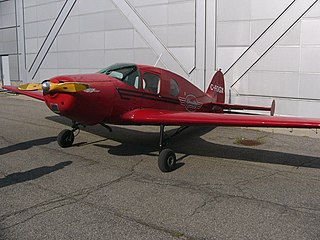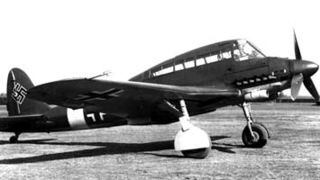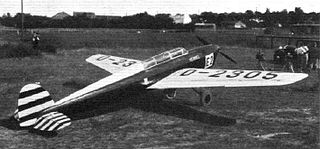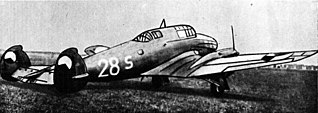| YO-50 | |
|---|---|
 | |
| Role | Army observation aircraft |
| Manufacturer | Bellanca |
| First flight | 1940 |
| Number built | 3 |
The Bellanca YO-50 was a United States prototype observation aircraft, built for the United States Army in 1940. Typical for aircraft of its type, it was a high-wing braced monoplane with fixed tailwheel undercarriage and extensive cabin glazing. Its inverted "V" engine made it resemble its German equivalent, the Fieseler Storch.

The United States of America (USA), commonly known as the United States or America, is a country composed of 50 states, a federal district, five major self-governing territories, and various possessions. At 3.8 million square miles, the United States is the world's third or fourth largest country by total area and is slightly smaller than the entire continent of Europe's 3.9 million square miles. With a population of over 327 million people, the U.S. is the third most populous country. The capital is Washington, D.C., and the largest city by population is New York City. Forty-eight states and the capital's federal district are contiguous in North America between Canada and Mexico. The State of Alaska is in the northwest corner of North America, bordered by Canada to the east and across the Bering Strait from Russia to the west. The State of Hawaii is an archipelago in the mid-Pacific Ocean. The U.S. territories are scattered about the Pacific Ocean and the Caribbean Sea, stretching across nine official time zones. The extremely diverse geography, climate, and wildlife of the United States make it one of the world's 17 megadiverse countries.

The United States Army (USA) is the land warfare service branch of the United States Armed Forces. It is one of the seven uniformed services of the United States, and is designated as the Army of the United States in the United States Constitution. As the oldest and most senior branch of the U.S. military in order of precedence, the modern U.S. Army has its roots in the Continental Army, which was formed to fight the American Revolutionary War (1775–1783)—before the United States of America was established as a country. After the Revolutionary War, the Congress of the Confederation created the United States Army on 3 June 1784 to replace the disbanded Continental Army. The United States Army considers itself descended from the Continental Army, and dates its institutional inception from the origin of that armed force in 1775.

A monoplane is a fixed-wing aircraft with a single main wing plane, in contrast to a biplane or other multiplane, each of which has multiple planes.
Three examples were purchased for evaluation against the Stinson YO-49 and Ryan YO-51 Dragonfly. The Stinson won the production contract, and no further YO-50s were built.






















